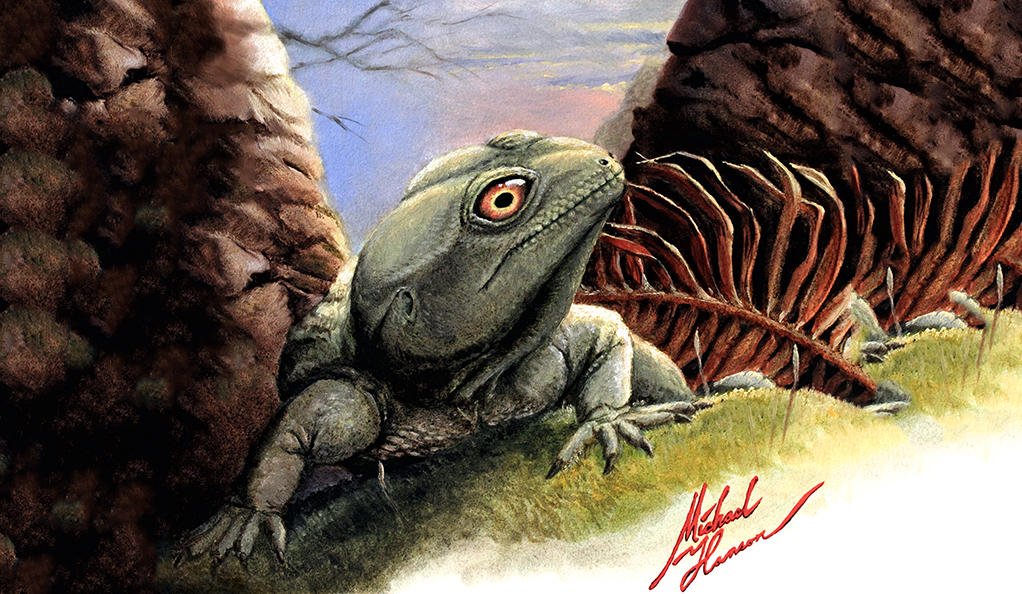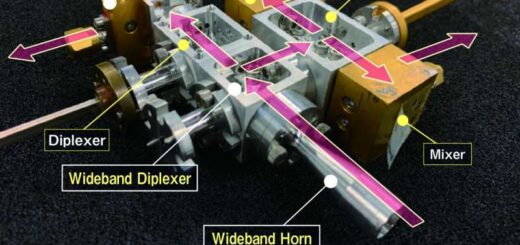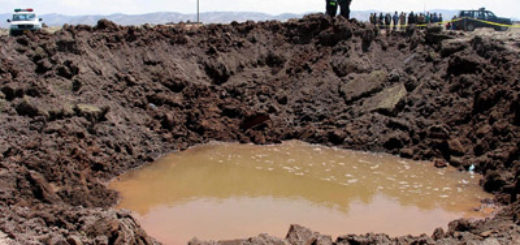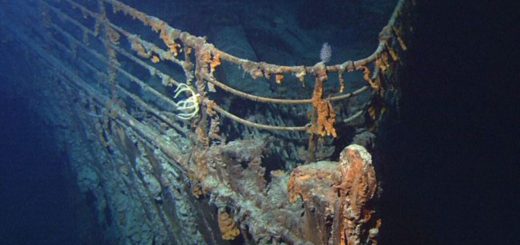‘Colobops’ Small Reptile With Little But Massive Jaws Lived In Connecticut 200 Million Years Ago
A small reptile named Colobops noviportensis, lived in prehistoric Connecticut 200 million years ago.
“Colobops would have been a diminutive but plucky little beast, part of a little-known menagerie of small animals that lived among the first dinosaurs,” said Bhart-Anjan Bhullar, assistant professor and assistant curator in geology and geophysics at Yale in a press release.

An artist’s rendering of Colobops noviportensis, a new species of reptile from prehistoric Connecticut. (Michael Hanson
The creature had exceptionally large jaw muscles considering its small size.
“Its tiny frame hid some big secrets,” Bhullar said. “Despite its lizard-like aspect, it is in fact an early branch-off of the lineage leading to dinosaurs and birds. Also, its little jaws could bite harder than anything else its size. Perhaps that big bite allowed it to feed on tough, armored prey impervious to weaker mouths.”
The specimen is a quarter-sized skull discovered in Meriden, Conn., during roadwork in 1965.
See also:
Ancient Transylvania Was Home To Giant Flying Reptiles With A Wingspan Of 32 Feet!
It has been part of the collections of the Yale Peabody Museum of Natural History for decades. The specimen’s new species name derives from Novus Portus, a Latinized version of New Haven — a reference to the New Haven Arkose geological formation.
“This project was a great example of the process of science,” said Adam Pritchard, a former member of Bhullar’s lab who is now at the Smithsonian Institution.
“The skull was initially discovered in the mid-1960s. In the 1990s, the skull was subject to initial study in which it was identified as a cousin of a modern lizard-like reptile called a tuatara. Our study ups the ante again, using advanced CT scanning and 3D modeling to reveal all kinds of new features of the skull. The features are very distinctive, allowing us to establish a new species.”
The Yale team took a new look at the specimen. The researchers did a 3D reconstruction of the skull and discovered that it showed specialization in the jaw that was unprecedented in any other known small tetrapod, juvenile or adult.
“Comparisons with modern reptile dissections showed that it had incredibly well-developed jaw muscles for its size, suggesting an exceptional bite, even compared to the diversity of modern reptiles,” Pritchard said. “It’s a great illustration of the critical importance of fossils big and small for understanding the diversity of organisms.”
The researchers said the discovery means modern vertebrates originated in a world that was already populated by small and large-bodied physical extremes, in terms of how animals physically adapted to their environment.



 Creators of mankind
Creators of mankind Description of “Tall white aliens”
Description of “Tall white aliens” Where they came from?
Where they came from? About hostile civilizations
About hostile civilizations The war for the Earth
The war for the Earth “Tall white aliens” about eternal life
“Tall white aliens” about eternal life Video: “Nordic aliens”
Video: “Nordic aliens” Aliens
Aliens Alien encounters
Alien encounters The aliens base
The aliens base UFO
UFO Technology UFO
Technology UFO Underground civilization
Underground civilization Ancient alien artifacts
Ancient alien artifacts Military and UFO
Military and UFO Mysteries and hypotheses
Mysteries and hypotheses Scientific facts
Scientific facts


















